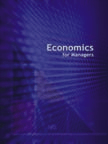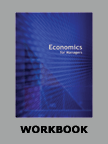British American Tobacco in South Korea




|
|
ICMR HOME | Case Studies Collection
Case Details:
Case Code : BSTR254
Case Length : 22 Pages
Period : 1998-2006
Pub Date : 2007
Teaching Note :Not Available
Organization : British American Tobacco
Industry : Tobacco
Countries : South Korea
To download British American Tobacco in South Korea case study (Case Code:
BSTR254) click on the button below, and select the case from the list of available cases:

Price:
For delivery in electronic format: Rs. 400;
For delivery through courier (within India): Rs. 400 + Rs. 25 for Shipping & Handling Charges
» Business Strategy Case Studies
» Case Studies Collection
» Business Strategy Short Case Studies
» View Detailed Pricing Info
» How To Order This Case
» Business Case Studies
» Case Studies by Area
» Case Studies by Industry
» Case Studies by Company
Please note:
This case study was compiled from published sources, and is intended to be used as a basis for class discussion. It is not intended to illustrate either effective or ineffective handling of a management situation. Nor is it a primary information source.
|
|
<< Previous
Excerpts
BAT in South Korea
|
BAT began its operations in South Korea way back in the year 1904. The company
continued operating in Korea for a decade and left the country in 1914 due to
the new tax imposed by the Korean authorities on tobacco products. In July 1998,
BAT Korea was incorporated as a wholly-owned subsidiary of the BAT Group. BAT
Korea consisted of three corporate entities - British American Tobacco Korea
Limited, British American Tobacco Korea Manufacturing Limited, and the Korea
branch office of Rothmans Fareast BV. Kent, one of the most popular brands from
the BAT stable, and Kool, a leading brand in the menthol segment, were
introduced in the Korean market in 1998...
|
|
The Growth Strategies
From the beginning, BAT considered South Korea as one of its most important
markets. Though the company was doing well in the country in the year 2001, its
plans to build a factory there were driven by the fact that South Korean
customers preferred the brands being manufactured locally.
|
|
According to Taylor, "The key to growth in South
Korea is local manufacture. We already sell Dunhill and have been in the
market since 1988 but market research shows that there is rising demand
for international brands made locally."
PRODUCTS
BAT had launched some of its best known international brands in South
Korea. BAT Korea was of the view that a single brand or product was not
suitable for all consumers, and a portfolio of brands was introduced in
the Korean market to cater to the different needs and preferences of
consumers and different market sectors (Refer to Exhibit IV for BAT's
brands in South Korea)... |
Employee Policies
All employees of BAT in South Korea were required to abide by the Internal
Standards of Business Conduct (Refer to Exhibit VI for the Internal Standards of
Business Conduct). From time to time, BAT conducted dialogue sessions with
employees in order to understand their expectations...
The Road Ahead
BAT considered South Korea as one of its most important markets. The company
also planned to increase the capacity of its plant to cater to the needs of the
local as well as the export market. According to Naughton, "Korea is a dynamic
market with fast changing trends and we aim to be innovative in satisfying
consumers with our world class brands. It will be both challenging and rewarding
to continue to build on this great success."...
Exhibits
Exhibit I: Top Tobacco Companies (2005)
Exhibit II: British American Tobacco - International Operations
Exhibit III: Tobacco Industry in South Korea
Exhibit IV: BAT's Brands in South Korea
Exhibit V: Advertisement of Finesse
Exhibit VI: BAT Korea - Standards of Business Conduct
Exhibit VII: British American Tobacco Korea - Market Share

|



